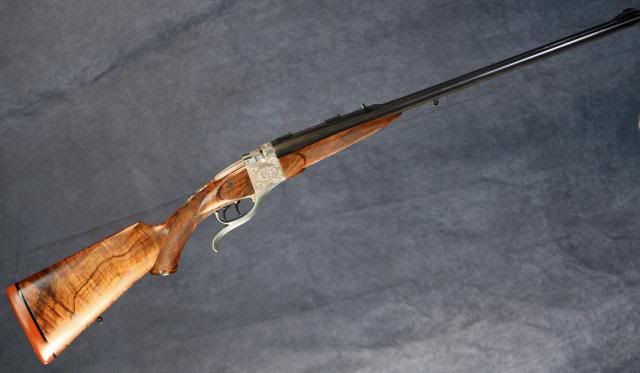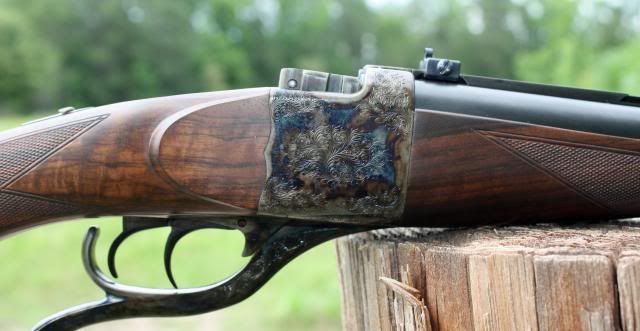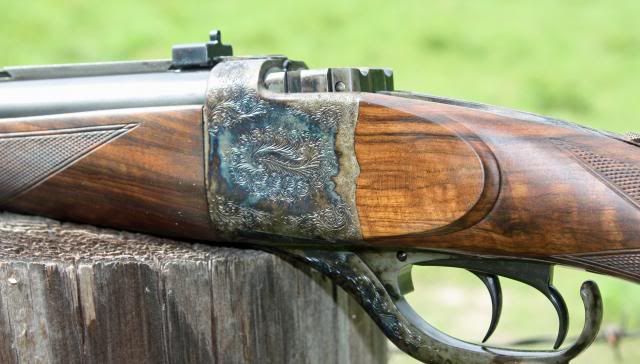| Aaron_Little |
| (.300 member) |
| 14/06/14 02:48 AM |
|
|
During my three years working with Bailey there were many changes to his design, in fact I think the only thing the early ones(pictured) have in common with the new design is the falling breach block. The early ones more closely matched the Gibbs design. From the beginning Baileys intentions were to keep the design as simple as possible with the largest/robust parts possible. With that in mind...
The issues with the original design are in dealing with extraction and drawing the firing pins back before the block moves. Can a falling block ever be as effective as a traditional break action in extracting? Simple laws of physics say no. With a break action you have a lot more leverage/mechanical advantage to draw sticky cases out of chambers, in falling block designs your leverage comes from a shorter 6-8" lever, which is of course also acting against the mainsprings when opening.
To minimize this issue the first big change from the original design was extraction. Traditional break actions draw the cases out .100" or so before the ejectors kick them out. When cases stick its usually the first .050" that causes the problems. With this in mind Bailey set out to design a system that worked in two stages, one to give leverage the other velocity. The first phase acts to draw the cases out .050" with great leverage but no velocity. The second takes over near the end of the levers travel. It has little force but more velocity to ensure the cases are kicked out of the chambers. Since the cases have already been drawn out a little there isn't much force needed. This design acted to alleviate extraction issues.
The next change was in the mainsprings. The original design had the mainsprings behind the hammers, one had to work against the mainsprings when opening the lever/cocking the hammers. Bailey moved the mainspring in front of the hammers. This allowed him to come up with a way to cock the hammers and open the lever without working against the mainsprings forces, closing the lever then acted to tension the mainsprings. In turn since one didn't have to work against any forces, the lever can open much faster. This design also got rid of needing a cocking rod since the mainspring could be used to cock the hammers. The old extraction system with two phases wasn't necessary anymore, so he got rid of the second phase. The first phase system had enough force and velocity to kick the cases out onto the loading channels. Also this design alleviated the need to have a latch on the lever to hold it closed, or needing an additional spring to do the same. The mainsprings when cocked acted to hold the lever closed when tensioned or un-tensioned. Dare I say this was a genius change for many reasons.
Another major design was to cut the breach block channels at 93 degrees to the bores. This along with two other designs acted to better draw the firing pins off the primers before the block moves as well as make the block easier to manipulate.
Other changes were made in barrel construction, takedown mechanism, triggers, safety, slimming the overall profile, and we got rid of needing a drawbolt.





